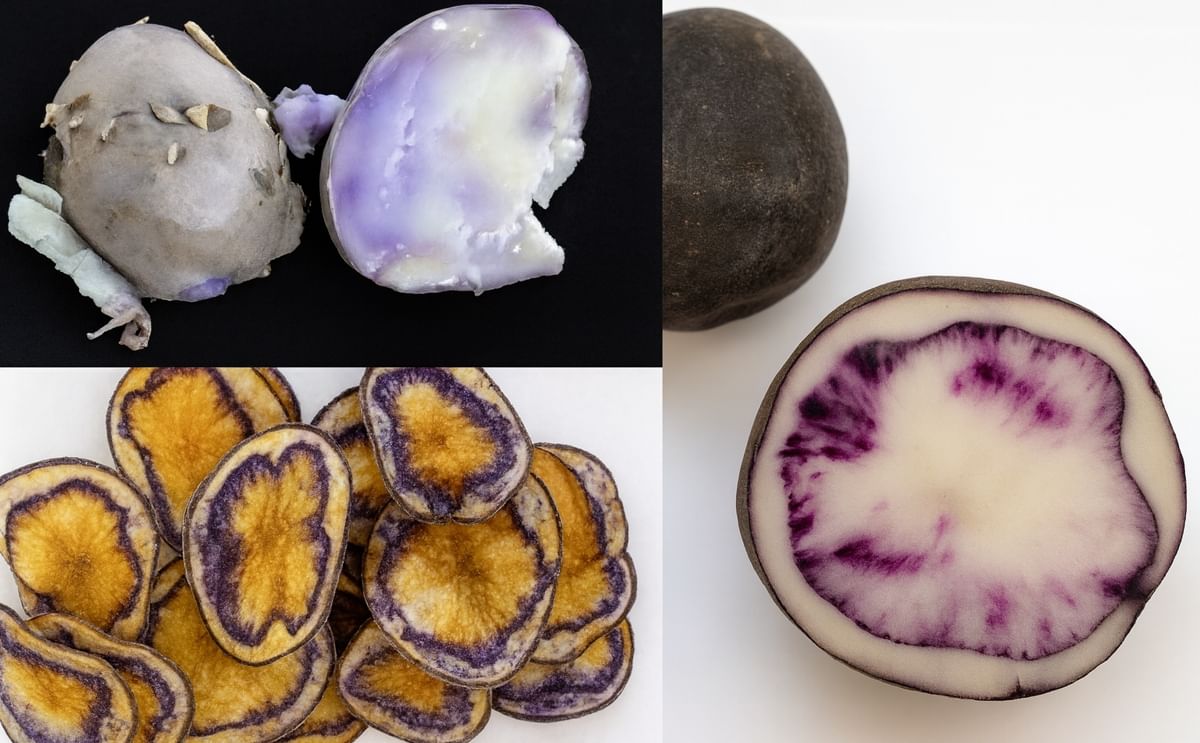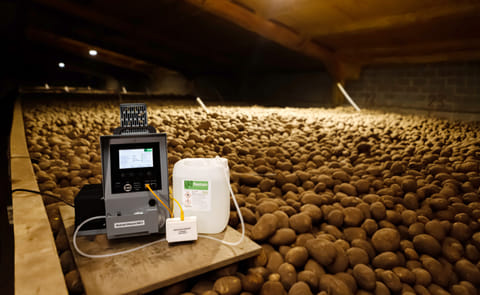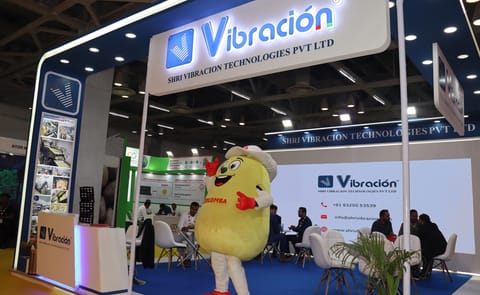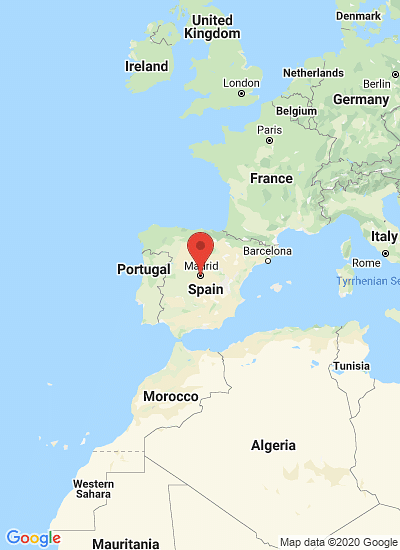On of Neiker Tecnalia's 4 new developed potato clones
Colorful and high in anti-oxidant potato clones with commercial potential developed by Neiker Tecnalia

The Basque Institute for Agricultural Research and Development, Neiker-Tecnalia, has created four new potato clones which are characterised by their high antioxidant content, their good production both in size and number of tubers, as well as by their resistance to the usual diseases of this crop. The clones were obtained by natural methods through crossing varieties from South America with commercial varieties used in Europe. The result was three clones of the purple-fleshed potato and one with a markedly yellow flesh. The attractiveness and nutritional value of these types of potato make them a product highly regarded by professionals in gastronomy and by the public in general.
The work of creating the clones is part of the Potato Genetic Enhancement Programme drawn up by Neiker-Tecnalia. The research was led by agricultural engineer Ms Raquel López, being the basis for her PhD thesis, and was presented at the University of the Basque Country. The aim of this specialist was to find potatoes which brought together the features of the South American varieties (their colour, resistance to pathogens and their nutritional and organoleptic properties) with those of the commercial varieties employed in our latitudes and characterized by their high productivity.
The Neiker-Tecnalia researchers brought 37 varieties from the Centro Internacional de la Papa, based in Peru. These native South American varieties were crossed in the greenhouse with commercial varieties, using natural procedures. The selection of and crossing between individuals with the best traits has given rise to the four clones mentioned. For the moment, these involve advanced clones and not commercial varieties, as they are not registered at the Spanish Office for Plant Varieties (OEVV in the Spanish acronym) or the European Community Plant Variety Office (CPVO). The process of registering is a long one, lasting about 15 years.
The varieties imported from Peru have a very low productivity in our latitudes, both in size and the number of tubers. Nevertheless, with the process of crossing and selection, the final clones having acceptable productivity has been achieved.
Nutritional value and resistant to pathogens
The four clones obtained are characterised by the high presence of antioxidants compounds, making them very attractive from a nutritional perspective. The three purple-flesh clones contain a large quantity of anthocyanins – a highly appreciated pigment in the preparation of high added value foods –, while the yellow flesh variety have carotenes – essential chemical components for the diet – and in greater quantities than in the usual commercial varieties.
Resistance to diseases is another of the achievements. The four clones show certain resistance to the pathogens analysed, such as the potato virus Y, as well as the Pectobacterium atrosepticum bacteria, which weaken the vegetable and considerably undermine its production.
Researcher Raquel López highlights the importance of taking into account the clones achieved. “It is beneficial for European producers to have varieties of purple flesh potato that are adapted to the climatological conditions of this continent. Moreover, these varieties incorporate natural antioxidant compounds, which are nutritionally and visually attractive, both for restaurant professionals and for end consumers”.
Source: Neiker Tecnalia









